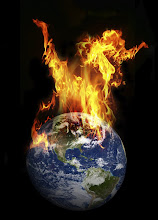According to Heinberg, the main features of part I and II of the “Petroleum Miracle” are (1) transportation, (2) electrification, (3) warfare, and (4) wealth.
For the “Petroleum Miracle” transportation contributes to social changes because roads are built and people have a way to move out of the cities and into more rural areas. People liked the idea of raising a family away from the pollution and filth of the inner cities. As the people move, the need to build more roads emerges, and more people are buying cars to drive to work, into the cities. Before transportation emerged people used street cars to get around in the cities, but when GM and Firestone bought out street cars and demolished them, they built diesel cars and buses to transport people from their homes, into town or work. For the “Petroleum Miracle” electrification contributes to change because people switched from using kerosene to electricity for lighting. Electricity uses oil, coal, and fuel (natural gas) for energy. For the “Petroleum Miracle” warfare contributed to change because of the using of bigger equipment such as planes, which are heavy users of fuel or gasoline. For the “Petroleum Miracle” wealth contributed to change because now few people have a lot of money and power. A monopoly had been created.
The changes in agriculture (from the End of Suburbia) were especially profound and have the potential to affect food security in the future. Food security is defined as confidence that someone has, that they know where their next meal will be coming from and when. These changes consisted of using corn and ethanol as energy instead of oil and fossil fuels. As corn is converted into ethanol, the price for food goes way up. This makes if hard for the common man to afford food. Because food security is not usually a problem for the common now a day man, this would become a shocker for people if it became a problem. Another consequence of food costing so much money would be a decrease in food aid for other countries from the US and people in 3rd world countries would either starve or revolt and riot against their government.
Both the US and the USSR experienced a “peak” in their domestic oil production. These two “super” nations responded to this occurrence in two completely different ways. The US started importing their oil from other places such as Mexico and the Gulf of Mexico; with the motto…if we use up all of our oil supplies, we can just get it from somewhere else. Which is another reason to why the war is still ongoing; the US is trying to get oil from places that do not want to give it up. The USSR responded by not doing anything with their oil. While Russia and the Soviet Union peaked in their oil production around the 1980’s, they still to this day have huge oil reserves at their finger tips. Also their demand decreased in the 1990’s, leaving them with even more oil to be saved.
Sunday, November 22, 2009
Subscribe to:
Post Comments (Atom)

No comments:
Post a Comment